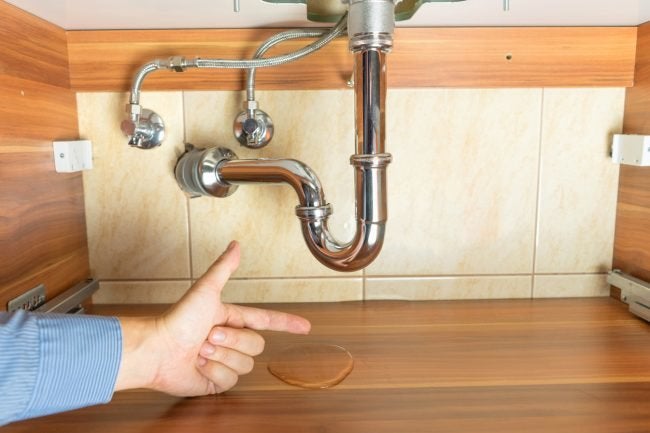Do you find yourself searching for ideas around Top leak detection hacks?

Early discovery of dripping water lines can alleviate a prospective catastrophe. Aside from saving you money, it will lessen the aggravation and also stress. The minute you discover a leak, calling your plumber for fixings is the very best service. However, some tiny water leakages may not show up. Right here are some hacks that assist if you can not identify it with your naked eyes.
1. Examine the Water Meter
Checking it is a guaranteed method that aids you discover leaks. If it moves, that shows a fast-moving leakage. This implies you might have a sluggish leakage that could even be below ground.
2. Check Water Usage
If you identify sudden modifications, regardless of your intake being the exact same, it suggests that you have leaks in your plumbing system. An unexpected spike in your bill shows a fast-moving leak.
Meanwhile, a stable increase monthly, despite having the very same habits, reveals you have a sluggish leak that's likewise slowly rising. Call a plumber to extensively check your building, specifically if you really feel a warm location on your floor with piping beneath.
3. Do a Food Coloring Examination
30% comes from commodes when it comes to water intake. Examination to see if they are running properly. Drop specks of food color in the tank and wait 10 minutes. There's a leak between the tank and dish if the shade somehow infiltrates your bowl throughout that time without flushing.
4. Asses Exterior Lines
Do not fail to remember to examine your outside water lines as well. Should water permeate out of the connection, you have a loosened rubber gasket. One small leak can lose lots of water and surge your water bill.
5. Check and Assess the Circumstance
Home owners should make it a routine to examine under the sink counters and also even inside cupboards for any kind of bad odor or mold growth. These 2 warnings indicate a leakage so punctual attention is needed. Doing regular inspections, even bi-annually, can save you from a significant problem.
Examine for discolorations as well as damaging as most home appliances and also pipelines have a life expectations. If you suspect leaking water lines in your plumbing system, don't wait for it to intensify.
Early discovery of dripping water lines can minimize a possible calamity. Some little water leakages might not be noticeable. Examining it is a proven means that helps you discover leaks. One little leakage can throw away heaps of water and also surge your water expense.
If you think leaking water lines in your plumbing system, don't wait for it to rise.
The Dangers of Undetected Water Leaks
Mold
One of the most common results of undetected water leaks in your home is mold. Under the right conditions, mold can begin to grow and spread in just a day or two.
Moisture from water leaks combined with humidity and lack of ventilation allow mold spores to germinate and start spreading.
And while household mold doesn’t carry the same health risks as substances like asbestos, they can cause allergic reactions in people sensitive to them or with asthma.
Structural Damage
When water leaks occur in places we can’t see — above the ceiling, behind walls or beneath floors — they often have time to do some serious damage before making themselves known.
You might notice cracks or bubbles appear in your walls or a slow drip or water from the ceiling.
These are signs of water leaks and buildups in the structure of your home. If you don’t jump on these problems soon enough, the wood frame that supports your house could start rotting, leading to costly repairs and increasing the risk of disasters like ceiling or wall collapses.
Water Waste
According to the Alliance for Water Efficiency, the average home can lose anywhere from 2,000 to 20,000 gallons of water per year due to leaks.
High numbers like that might make you imagine a burst pipe spewing out water. But believe it or not, even a small, constant drip from a kitchen sink could add up to over a thousand gallons of wasted water in a single year.
And if you live in a place where you pay for every gallon of water you use, that adds up to a lot of dollars down the drain. So we understand leaks are bad. Let’s take a look at some of the common (and not-so- common) water leaks you might find around your home.
Flush Valve Flapper
The flush valve flapper is a rubber flap that sits above the flush valve at the bottom of the tank. It’s attached to the flusher with a chain. Over time, it can get worn out and lose its seal, causing an endless flow of water into the toilet bowl.
These leaks are hard to detect since they’re usually silent, but there’s a little insider trick you can use with just a little dye or food coloring:
Put a few drops in the toilet tank. Check the water in your toilet bowl 15 minutes later. If any of the color made it into the toilet bowl, you’ll know what the culprit is.
Fill Valve
The fill valve is what replenishes your toilet’s tank water after you flush. If you’ve ever looked inside your toilet tank and seen water gushing out of an upright plastic valve, that’s a faulty fill valve.
https://meetflo.com/blogs/flo/how-to-find-and-repair-water-leaks-a-comprehensive-guide

I was shown that write-up about Leaking water lines from an associate on another web page. Do you know about somebody who is fascinated by the niche? Be sure promote it. I love reading our article about Detecting hidden plumbing leaks.